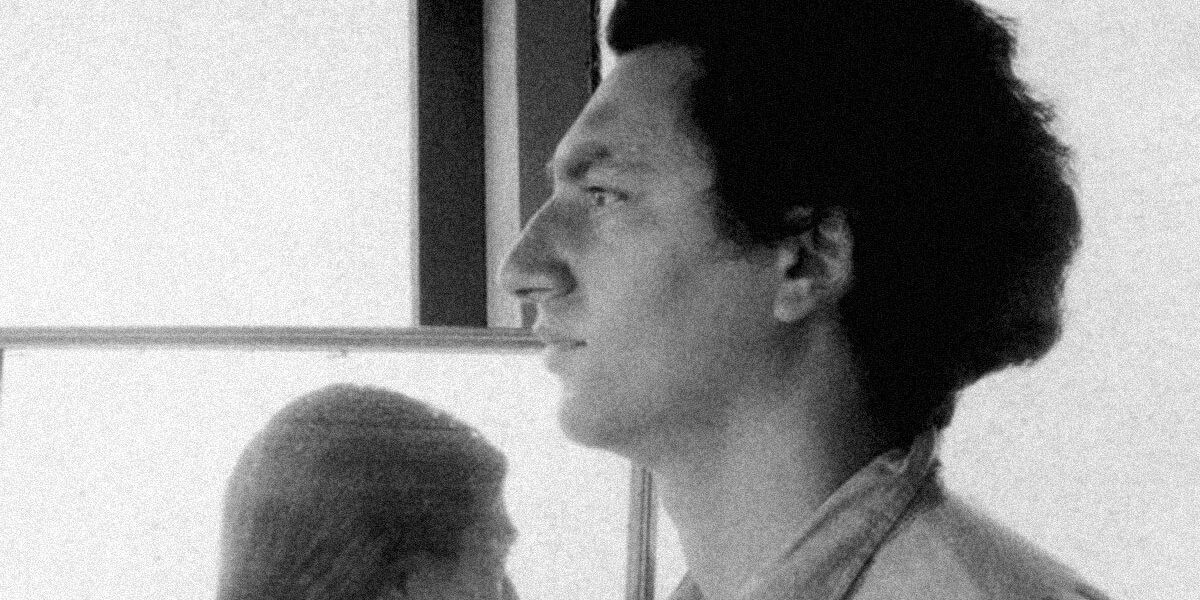The Long Career of the Film Philosopher of the NYC Avant-Garde Scene is Showcased on two-disc set.
BLU-RAY STREET DATE: JULY 27, 2021/KINO CLASSICS
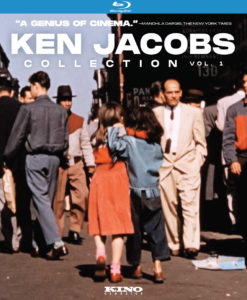
When it comes to avant-garde films, there are generally two types. The first is the kind that’s garnered the niche’s high falutin’ reputation. That is, filmmaking that challenges the medium, bucks against ingrained notions of linear narrative, and justifiably demands a more intense engagement on behalf of the viewer.
The second type is the horsecrap.
To a newcomer of the work of the seminal artist of this set, the material presented on Kino Classics’ impressively curated two-disc release, Ken Jacobs Collection Volume I, could land in either camp. On one hand, veterans and scholars of the mid-century NYC avant-garde film scene swear by the work as pioneering, intellectual, essential, et cetra. On the other hand… watching this stuff can feel a lot like watching someone mess around with film equipment, and dubbing the end result an “intellectual exercise”. Not to be an old man yelling at a cloud here (though Jacobs- the cloud in question- is actually much older), but dagnabbit, which is it??
*****

If I’ve learned one thing in all my years of film studies, it’s not to quickly dismiss that which I don’t initially understand or latch onto. In the case of Ken Jacobs, if his output is good enough for the American Film Institute, the Guggenheim Foundation, and the Rockefeller Foundation (all of which have seen fit to honor the artist/filmmaker), then it darn well oughta be good enough for me! But maybe not right now, is all.
Some of Jacobs’ earliest works, Little Stabs at Happiness (1963) and the shorts included in The Whirled (1961), are so entrenched in their happenin’ east coast place and time as to be certifiably Beat-infused works. Notably, both also feature another acclaimed groundbreaking experimental filmmaker, the late Jack Smith (maker of the controversial and oft-censored Flaming Creatures [1963]). These films take a stylistic leap from the the street-level home movie aesthetic of 1955’s Orchard Street. Though, for all their increase in untethered caution-to-the-wind shooting, they are no less monotonous. Primarily apartment bound, these early works (filmed on shoddy and sometimes expired filmstock) land as little more than youthful screwing around. Smith also figures into the slightly more ambitious but tonally similar sound film, Blonde Cobra.
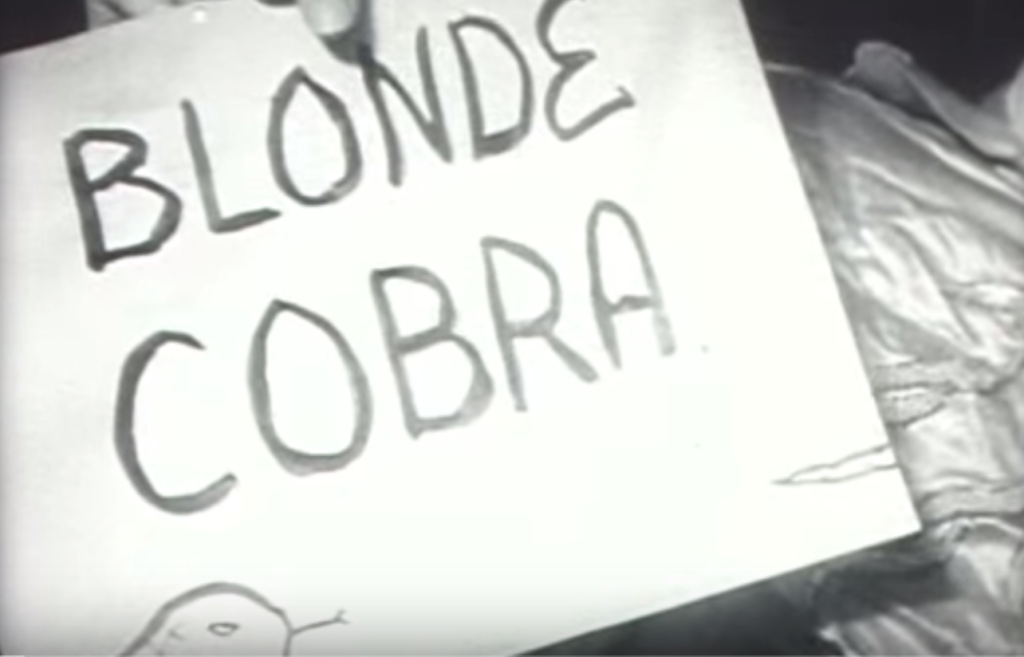
Then there’s the silent, 8mm feature film, The Sky Socialist. Shot extremely piecemeal between 1964 and 1966 (with a recent re-edit done in 2019), Sky Socialist feels more like a conventional “film”, if only barely, insofar as it has distinct characters doing things. An onscreen graphic informs us that we’re watching “a miraculously spared Anne Frank”, “Jewish writer Isadore Lhevinne”, “The stickler for truth and Touch of Evil”, “The Muse of Cinema”, and so on. These are obviously Jacobs’ cohorts miming out their little plays on rooftops and near the very central Brooklyn Bridge (the engineer of which, John Roebling, inspired the film’s title).
A description of the film that appears at IMDb and elsewhere reads, “Ken Jacobs’s most elusive and mysterious film is at once an allegory of movie-making, a demonstration of 8mm versatility, and a celebration of a now vanished neighborhood beneath the Brooklyn Bridge.” Mostly, it’s an array of topsy tidbits and tributes to Ferry Street, the area near the bridge where Jacobs grew up. This is the beating heart of The Sky Socialist, and this is where it succeeds. With this film, the Jacobs novice can sense that whatever it is that he does and is known for doing is coming together.
Amy Taubin, reviewing both the recent cut of the film and its accompanying piece, The Sky Socialist: Environs and Outakes for Film Comment in 2019, rhapsodizes about the latter that “Somewhere in the middle of the film, I began to feel as I have when I looked at certain paintings by Cezanne and Vermeer for the first time—that the work of art has transformed the act of seeing.” I don’t know that I’d go that far, but I will concede that Environs and Outakes is more resonant, evocative, and wistfulness-inducing of its pockmarked, rundown, and ultimately destroyed old neighborhood. The impersonal demolition of these buildings had to be painful for Jacobs (by then relocated to different residence) to film.
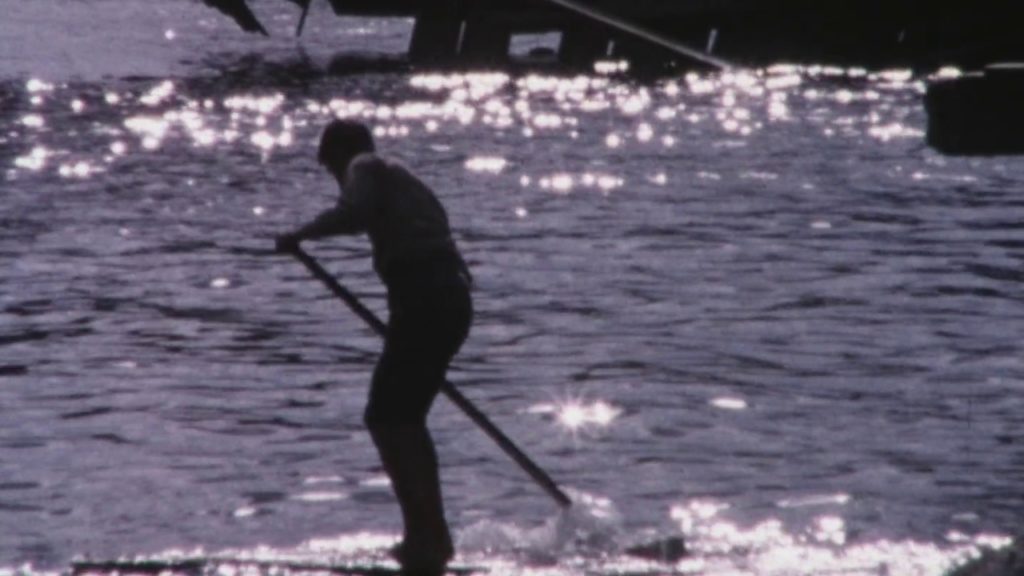
By contrast, Jacobs seems to be having a blast with 1996’s silent Georgetown Loop, a simple exercise of taking an early actuality of a point-of-view ride from the back of a train, and mirroring it beside itself. More distortion is applied as it repeats, encouraging us to enjoy the visceral kaleidoscoping of this black and white fragment of the world gone by.
A much deeper (and three decades earlier) dive by Jacobs in appropriating early cinema footage is his earlier, feature-length Tom, Tom, the Piper’s Son (1969). This is Jacobs’ best-known film, presented here courtesy of the Museum of Modern Art, which keeps a restored print in its archive. In taking a surviving fragment of a 1905 Biograph one-reeler of the same title by future D.W. Griffith cinematographer G.W. ‘Billy’ Bitzer, and then slowing it, zooming in on it, smearing it, and all manner of other fun with an optical printer, Jacobs’ hyper-focusing leads us to follow suit. In such, we are encouraged to consider the blunt mechanics of film exhibition in conjunction with the frozen-in-time dream of the captured moment. That the moment itself is one of hammy costumed actors moving through an artificial set only heightens the levels of curious connection and disconnection. Who were these people? Why was this set built this way? How could they have ever guessed that their cinema would ever be the subject of such scrutiny? Eventually, the picture zooms in to the degree that film grain is more discernable than human form.
And, in case 115 minutes isn’t enough of that, we have 2002’s A Tom Tom Chaser, which continues distorting Bitzer’s original, this time in even more aggressive ways. At a mere (merciful?) eleven minutes, this follow-up is Jacobs pushing his 1969 experiment further- in keeping with the mainstream heightening of visual stimuli in the years since. I can attest that as a member of the MTV generation, I had a hard time sitting through two hours of Jacob’s original Tom, Tom, The Piper’s Son. (As interesting as it could sometimes be). But the solution for that, dare I say, isn’t to pile on more of the same- even if this newer version is faster and more intense. (To quote aspiring experimental filmmaker George Lucas).
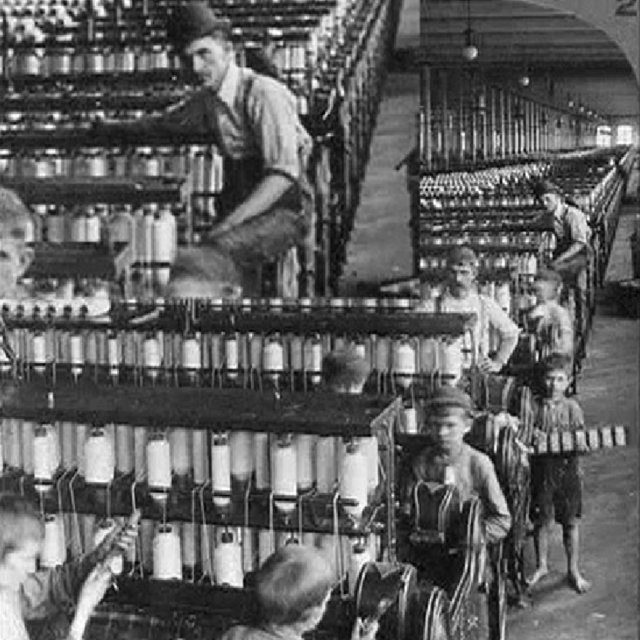
Capitalism: Child Labor (2006) is a truly uneasy experience showcasing a strobing, manipulated single sepia image of children at work in an Industrial Age factory. The nearly fourteen-minute piece quickly takes on a Lynchian nightmare quality, all the more unsettling for its droning electronic audio and unrelenting fevered aggression. Considering the subject matter, the very tangible feeling of sickness inflicted is entirely appropriate. It’s the kind of brilliant confrontation I never want to experience again.
There is, however, the immediate follow-up, Capitalism: Slavey (also from 2006), which utilizes the same strobing technique. This time, it’s a manipulated image of black slaves working in a field. Being that it also depicts children put to work, its subject all the more difficult to confront. This one, though, is silent, and only about three minutes in length.
The most recent and final film in this set is 2021’s Movie That Invites Pausing– yet another strobing ordeal, this one twenty-four-plus minutes, silent, and without the overt social commentary of the Capitalism films. This immersion into blinking abstraction begins with a warning that it is not for everyone and advises to stop watching if it’s too much. Aside from that, we are advised to initially watch it straight through, then watch it again while pausing the playback to analyze the strange honeycomb patterns and colors.
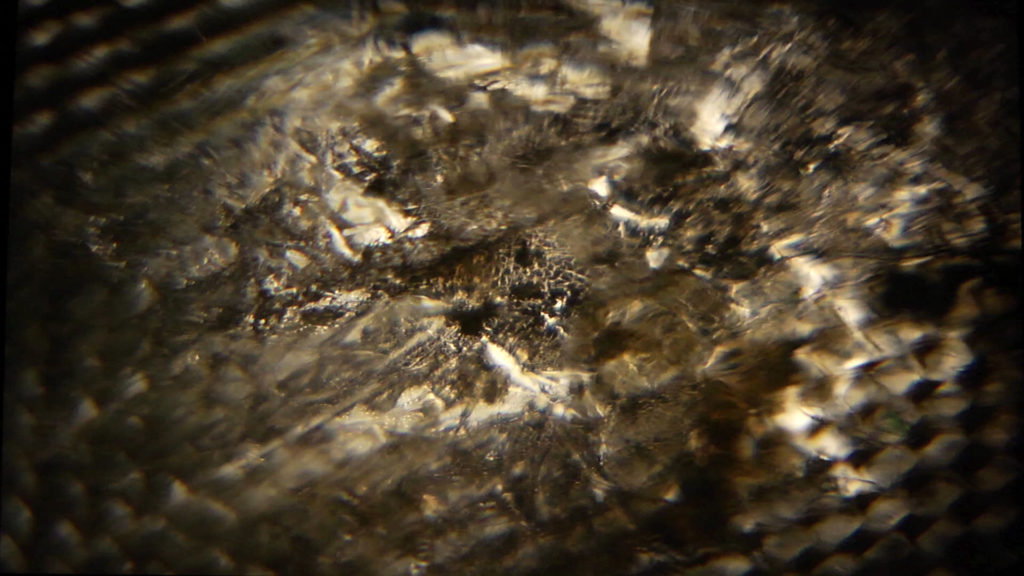
Kino Lorber includes a full-color booklet with this set which features an essay by venerable film critic J. Hoberman. Hoberman is the ideal choice to write about Jacobs, considering that he has a direct connection to the scene the filmmaker helped forge. (Hoberman fought to save the abovementioned controversial film by Jack Smith, as did Jacobs). His perspective, probably needless to say, is of the not-horsecrap perspective. In fact, he thinks quite highly of Jacobs’ work. The essay is called “Ken Jacobs: Film Philosopher”. While I’m not in line with his perspective, I’ve always appreciated Hoberman’s perspectives and film writings. This is no exception.
The only bonus feature on the disc itself is a recently recorded Zoom chat between Ken Jacobs and film scholar Tom Gunning. It’s a decent exchange, evidencing that Jacobs, even in his advanced age, is as sharp and counterculturally opinionated as ever.
This critic departs Kino’s Ken Jacobs Collection Volume I educated if not enlightened. It’s clear that Jacobs, a still-living (at time of this review) elder statesman of the New York avant-garde film scene, it worthy of such veneration. This is a filmmaker and teacher who clearly harbors a multifaceted love of our favorite flickering art form. (Particularly the “flickering” aspect). Yet, there is still the admitted relief at finally having gotten through this set. A look at Jacobs’ filmography reveals that what we have on these two Blu-rays is but a fraction of his prolific life’s work. Hence, the “Volume I”. For followers and students of avant-garde cinema, the notion of future Ken Jacobs’ collections is a promising thing. I, however, may be inclined to leave such releases for others to review.


